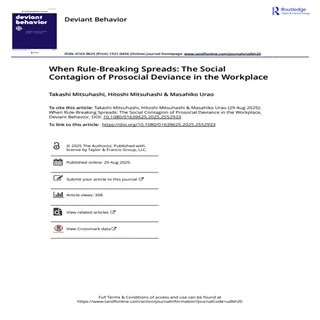By Takashi Mitsuhashi, Hitoshi Mitsuhashi, Masahiko Urao
Rule-breaking, a significant workplace safety threat, is often shaped by social influences, with employees more likely to engage in violations when exposed to similar behaviors among peers. Prior research has largely treated peer rule-breaking as uniformly influential, overlooking how situational factors and the perceived motives behind violations shape contagion effects. This study examines how peer effects influence employees’ rule-breaking behaviors, particularly when employees are exposed to peers’ rule-breaking in situations where these actions can plausibly be inferred as motivated by prosocial motives. Using longitudinal task-level data on nurses’ rule-breaking during medication administration at a medical facility in Tokyo, we find that a nurse is more likely to break patient identification rules when exposed more to rule-breaking by co-shift peers, especially when exposed in situations where the nurse can infer peers’ prosocial motives. In addition, we also find that peer effects diminish when management policies reduce nurses’ exposure, particularly by transitioning from pair-checking to single-checking procedures. These insights contribute to research on workplace safety and policy interventions to manage deviant behaviors.
Deviant Behavior, 1–25. 2025.



